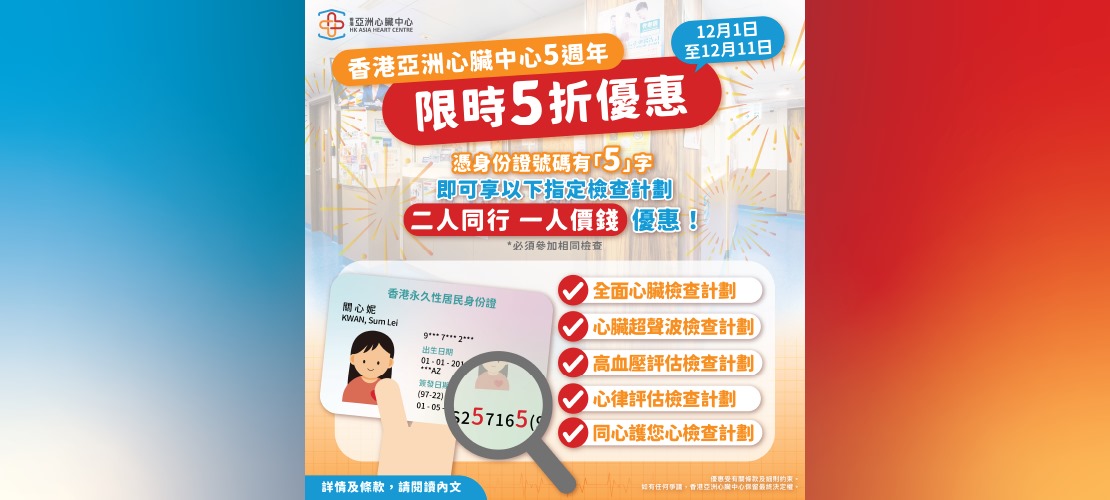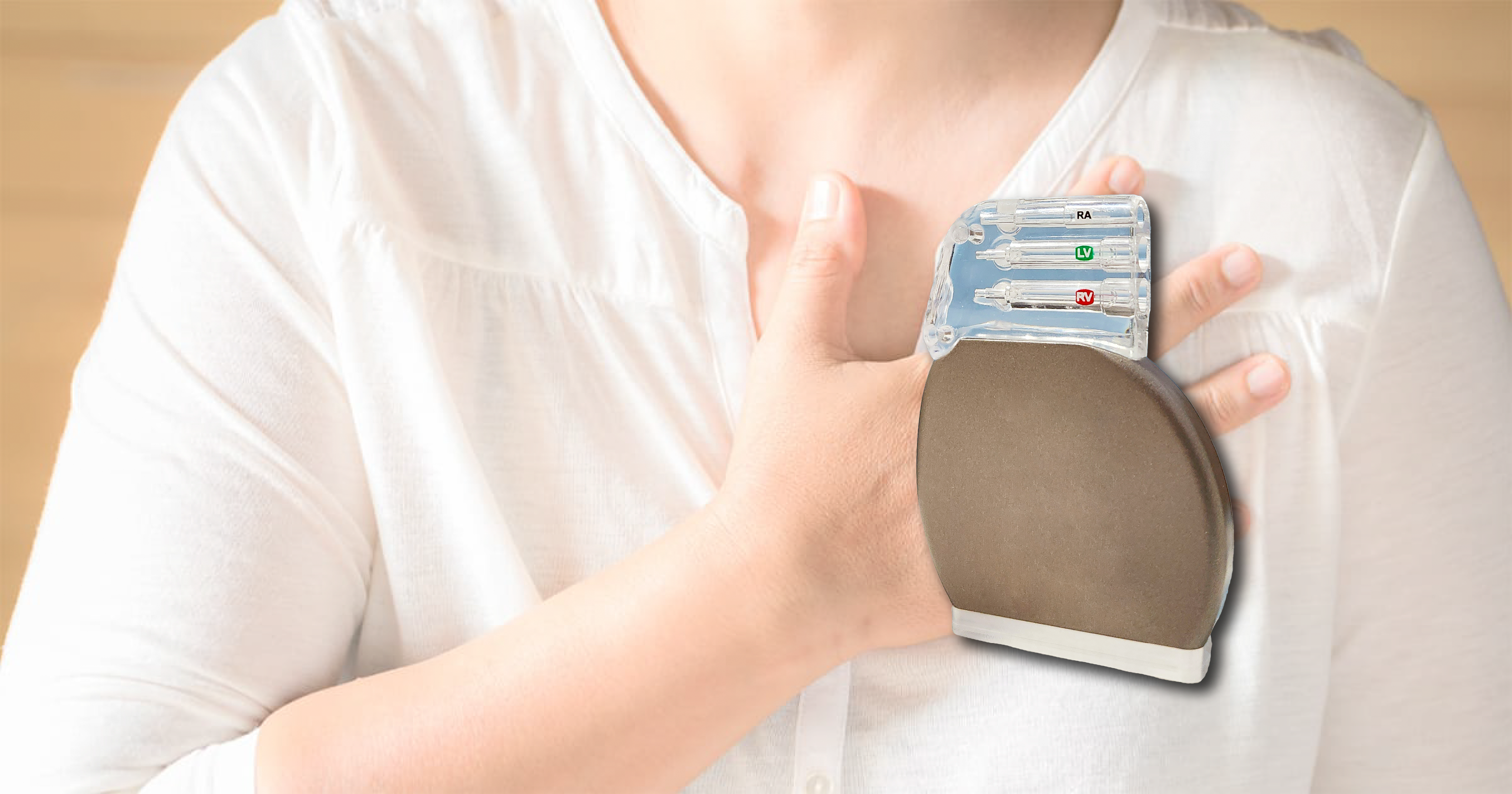Cardiac Resynchronization Therapy (CRT) | Hong Kong Asia Heart Centre
Heart failure patients have symptoms of shortness of breath and body swelling caused by decreased pumping of blood from the heart. Initial management includes treating underlying cause, adopting a healthy lifestyle and taking medications.
Patients with persistent symptoms despite
the above treatments may consider echocardiography. It is essentially an
implantable cardiac pacemaker that consists of a battery-powered generator and
leads which connect the generator to the patient’s heart. But there is a
special lead placed in the left heart, so that the device can stimulate both
the left and right heart in a coordinated (synchronized) manner. The synchronized
contraction will increase pumping of blood from the heart. Recent studies have
shown that in selected groups of patients, CRT improves heart failure symptoms,
quality of life, exercise capacity and heart function.
Proccess:
- This invasive procedure is usually performed under local anesthesia in a Cardiac Catheterization & Intervention Laboratory(CCIL). You are alert during the procedure, but we may give you sedation to calm you down.
- Electrodes are adhered to the chest to monitor the heart rate and rhythm. Blood oxygen monitor through your fingertip will be set up. Measurement of blood pressure from your arm will be taken during the examination.
- Skin disinfection will be performed and a small skin incision(about 3-5cm long) will be made under your left(sometimes right) clavicle.
- Contrast may be injected intravenously to visualize the veins in your arm and needle puncture under the clavicle may be required to obtain access to your vein.
- 3 leads will be advanced to your heart chambers through your vein under X-ray guidance. One lead is placed in the right atrium and one in the right ventricle. A special lead is implanted in a vein called the coronary sinus that lies on the surface of the left ventricle. Contrast injection is required to show this vein.
- The generator will be connected with the lead(s) and implanted in a pocket created under the skin or muscle.
- The wound will be closed with suturing material and covered with pressure dressing.
- The procedure usually takes around 3-4 hours.
After Procedure:
- You may be discharged from hospital several days after the CRT implantation.
- The wound should be covered with light dressing. Please keep the wound site clean and avoid making the dressing wet during shower. Always change dressing if wet.
- You may need to come back to the ward or clinic for suture removal 1 week after the procedure if any. You may remove the dressing 2-3 days after suture removal.
- Please avoid lifting the affected arm for 1 month and avoid vigorous arm movement in the first week after the procedure.
- You will be arranged to attend regular CRT analysis, re-programming and battery power assessment. To maximize the benefits of CRT, the settings will be optimized with the help of echocardiogram.
- Please carry your CRT identity card at all times.
- Follow your doctor’s instructions or refer to the information booklet from the CRT Company to minimize the risk of CRT malfunction due to electromagnetic interference. In general, strong electro-magnetic field or radiofrequency signal will interfere your pacemaker. Please keep a distance of >15cm(6 inches) from an active mobile phone. Household electrical or electronic appliance usually does not affect pacemaker.
- CRT generator will need to be replaced in 5-10 years’ time when the battery is depleted.
Heart failure patients have symptoms of shortness of breath and body swelling caused by decreased pumping of blood from the heart. Initial management includes treating underlying cause, adopting a healthy lifestyle and taking medications.
Patients with persistent symptoms despite
the above treatments may consider echocardiography. It is essentially an
implantable cardiac pacemaker that consists of a battery-powered generator and
leads which connect the generator to the patient’s heart. But there is a
special lead placed in the left heart, so that the device can stimulate both
the left and right heart in a coordinated (synchronized) manner. The synchronized
contraction will increase pumping of blood from the heart. Recent studies have
shown that in selected groups of patients, CRT improves heart failure symptoms,
quality of life, exercise capacity and heart function.
Proccess:
- This invasive procedure is usually performed under local anesthesia in a Cardiac Catheterization & Intervention Laboratory(CCIL). You are alert during the procedure, but we may give you sedation to calm you down.
- Electrodes are adhered to the chest to monitor the heart rate and rhythm. Blood oxygen monitor through your fingertip will be set up. Measurement of blood pressure from your arm will be taken during the examination.
- Skin disinfection will be performed and a small skin incision(about 3-5cm long) will be made under your left(sometimes right) clavicle.
- Contrast may be injected intravenously to visualize the veins in your arm and needle puncture under the clavicle may be required to obtain access to your vein.
- 3 leads will be advanced to your heart chambers through your vein under X-ray guidance. One lead is placed in the right atrium and one in the right ventricle. A special lead is implanted in a vein called the coronary sinus that lies on the surface of the left ventricle. Contrast injection is required to show this vein.
- The generator will be connected with the lead(s) and implanted in a pocket created under the skin or muscle.
- The wound will be closed with suturing material and covered with pressure dressing.
- The procedure usually takes around 3-4 hours.
After Procedure:
- You may be discharged from hospital several days after the CRT implantation.
- The wound should be covered with light dressing. Please keep the wound site clean and avoid making the dressing wet during shower. Always change dressing if wet.
- You may need to come back to the ward or clinic for suture removal 1 week after the procedure if any. You may remove the dressing 2-3 days after suture removal.
- Please avoid lifting the affected arm for 1 month and avoid vigorous arm movement in the first week after the procedure.
- You will be arranged to attend regular CRT analysis, re-programming and battery power assessment. To maximize the benefits of CRT, the settings will be optimized with the help of echocardiogram.
- Please carry your CRT identity card at all times.
- Follow your doctor’s instructions or refer to the information booklet from the CRT Company to minimize the risk of CRT malfunction due to electromagnetic interference. In general, strong electro-magnetic field or radiofrequency signal will interfere your pacemaker. Please keep a distance of >15cm(6 inches) from an active mobile phone. Household electrical or electronic appliance usually does not affect pacemaker.
- CRT generator will need to be replaced in 5-10 years’ time when the battery is depleted.


